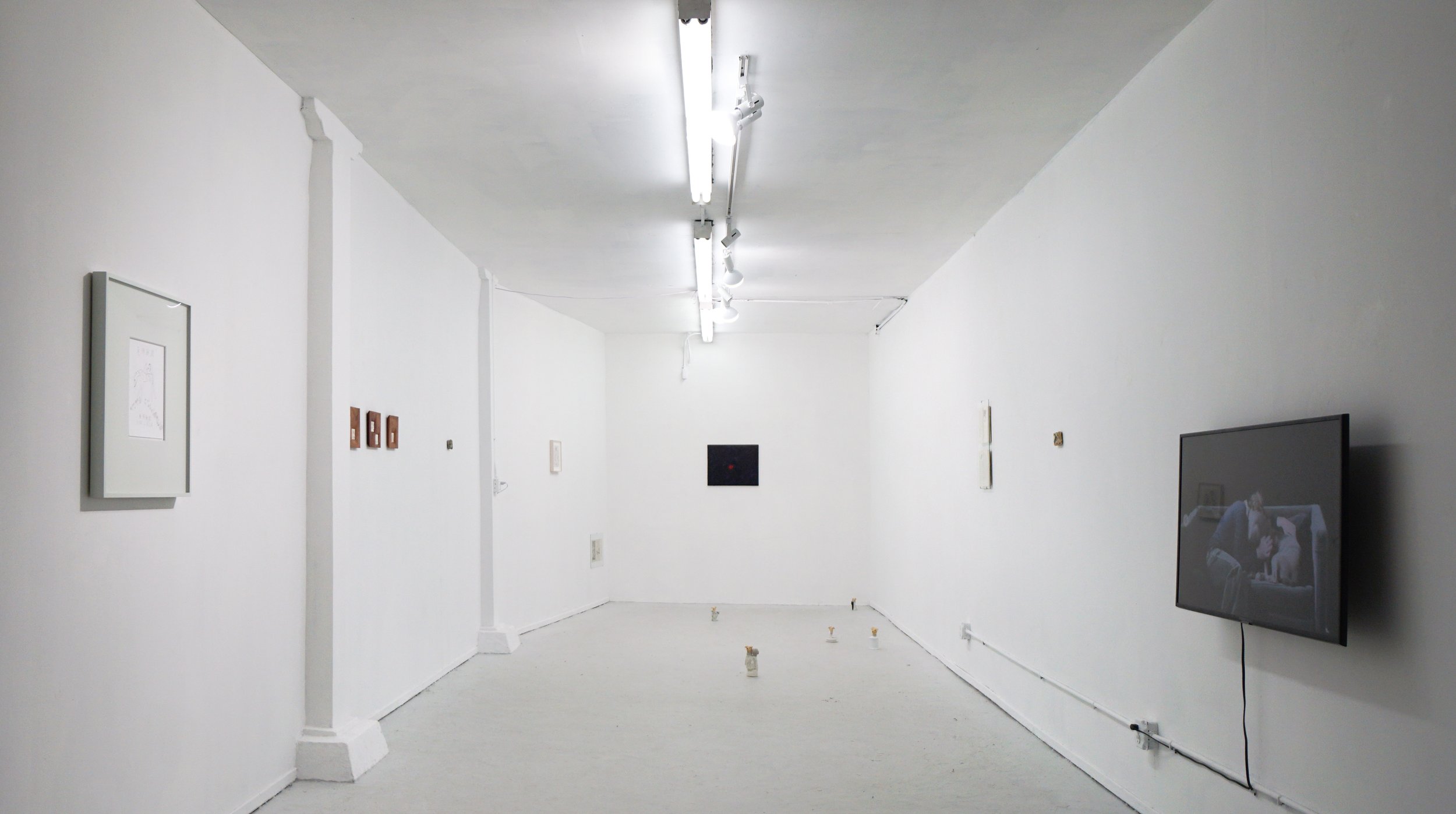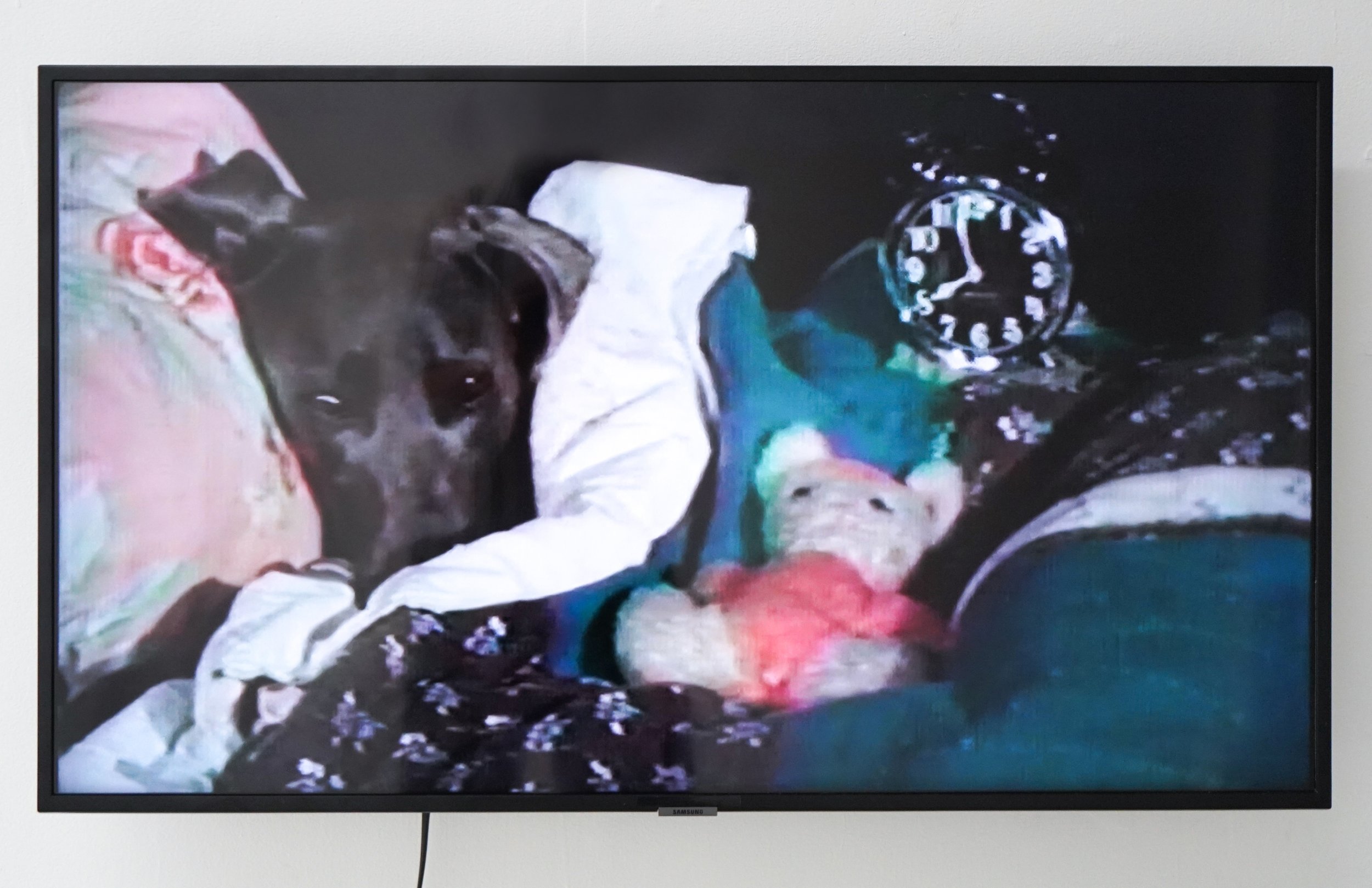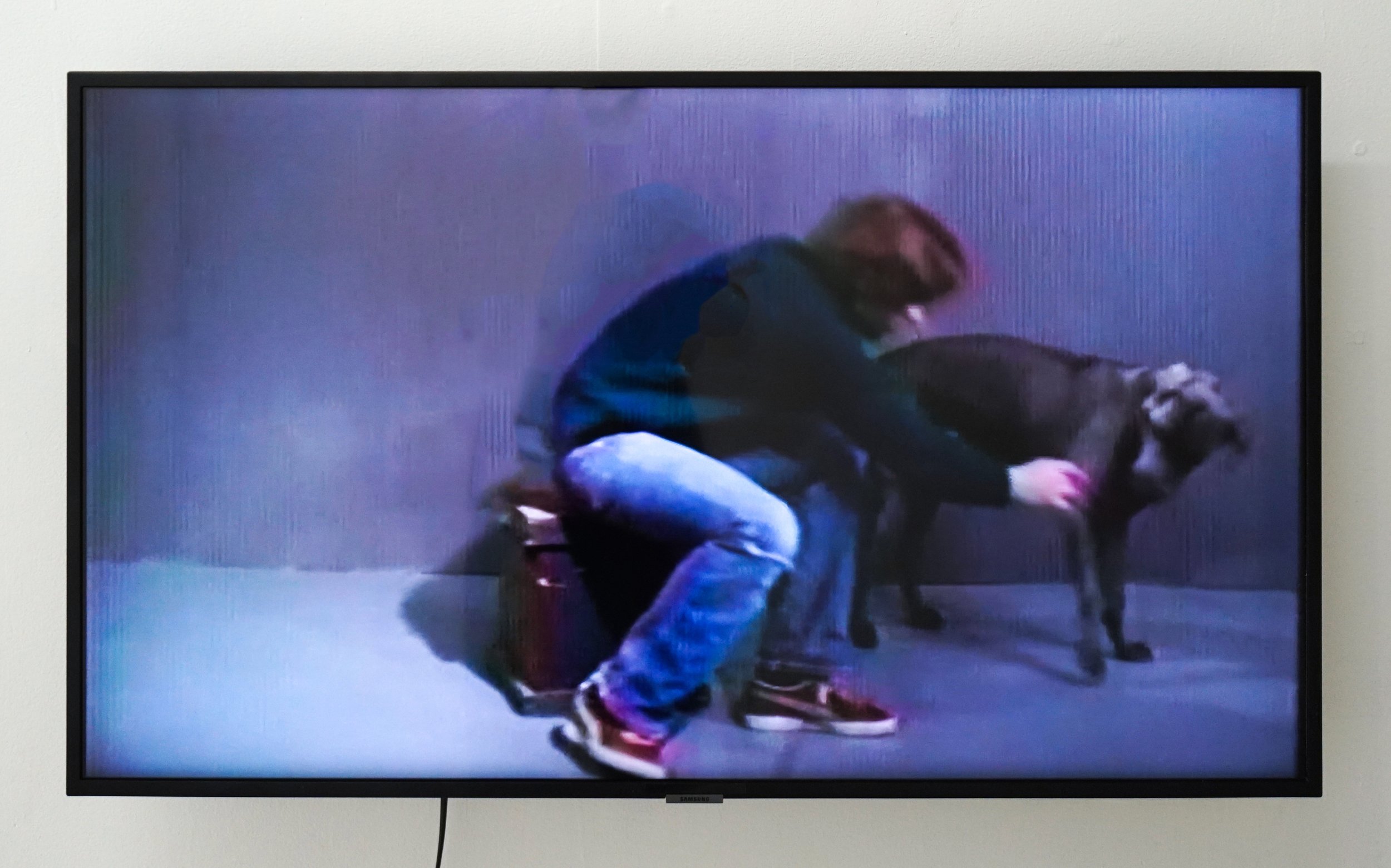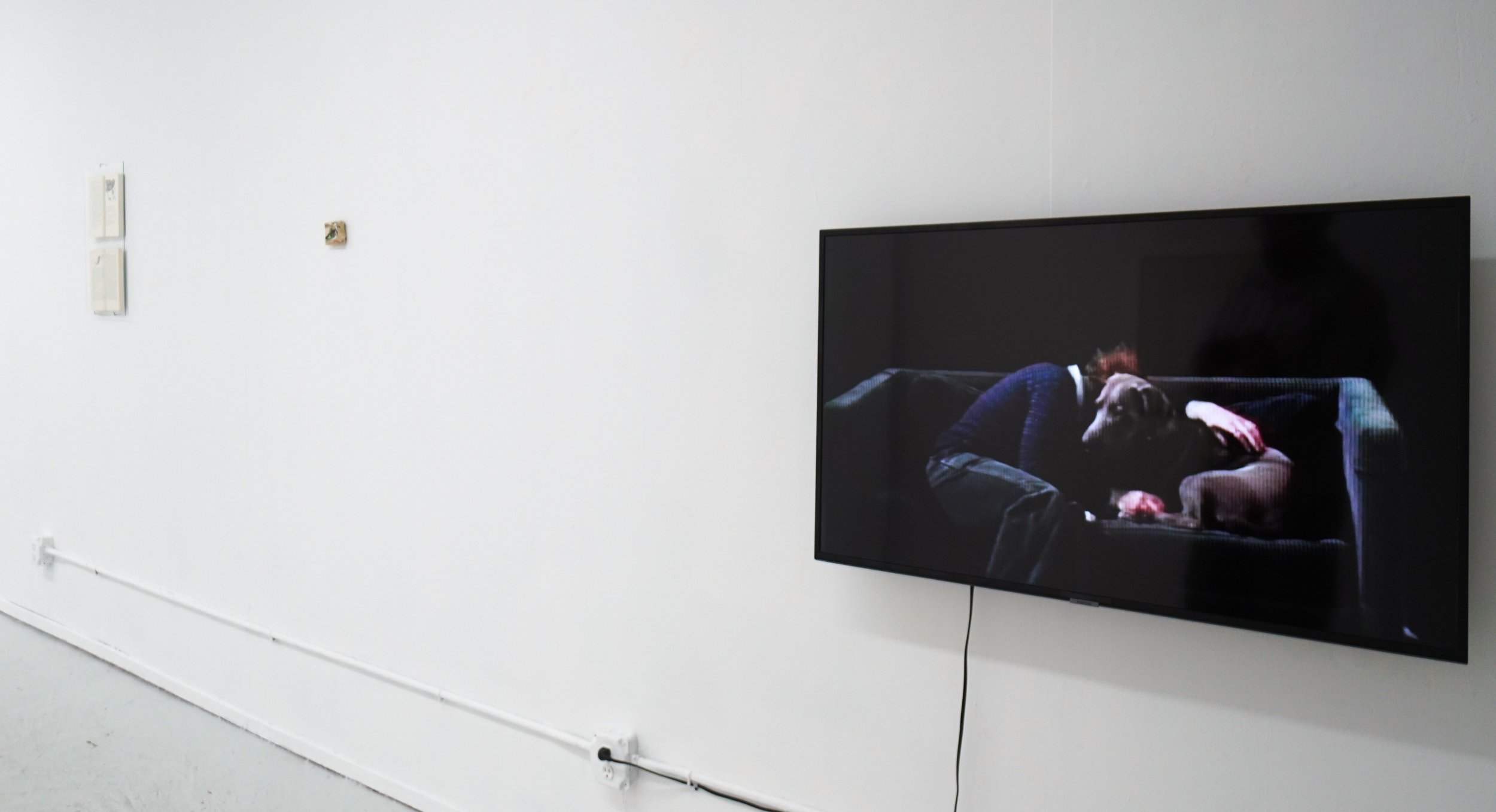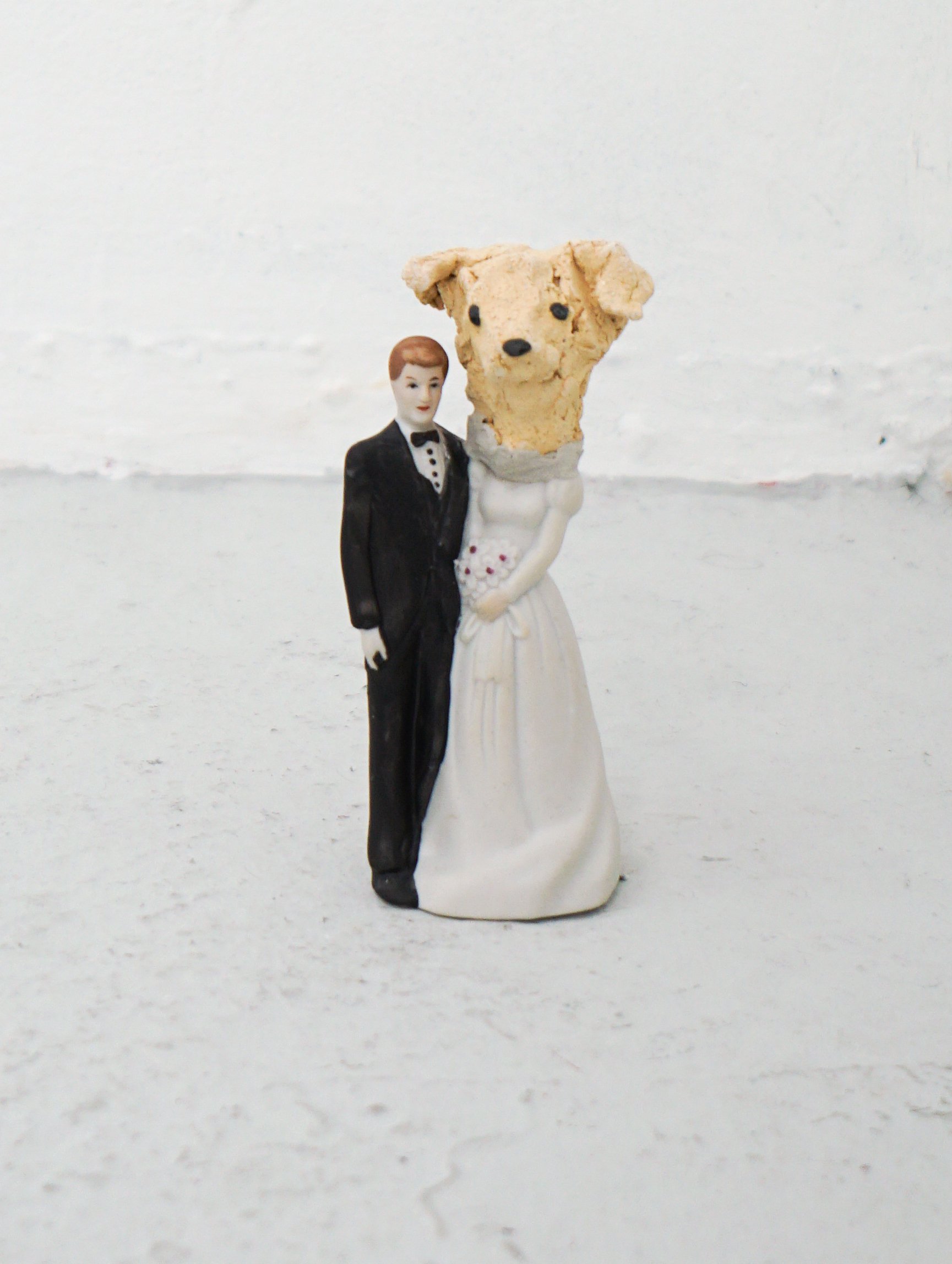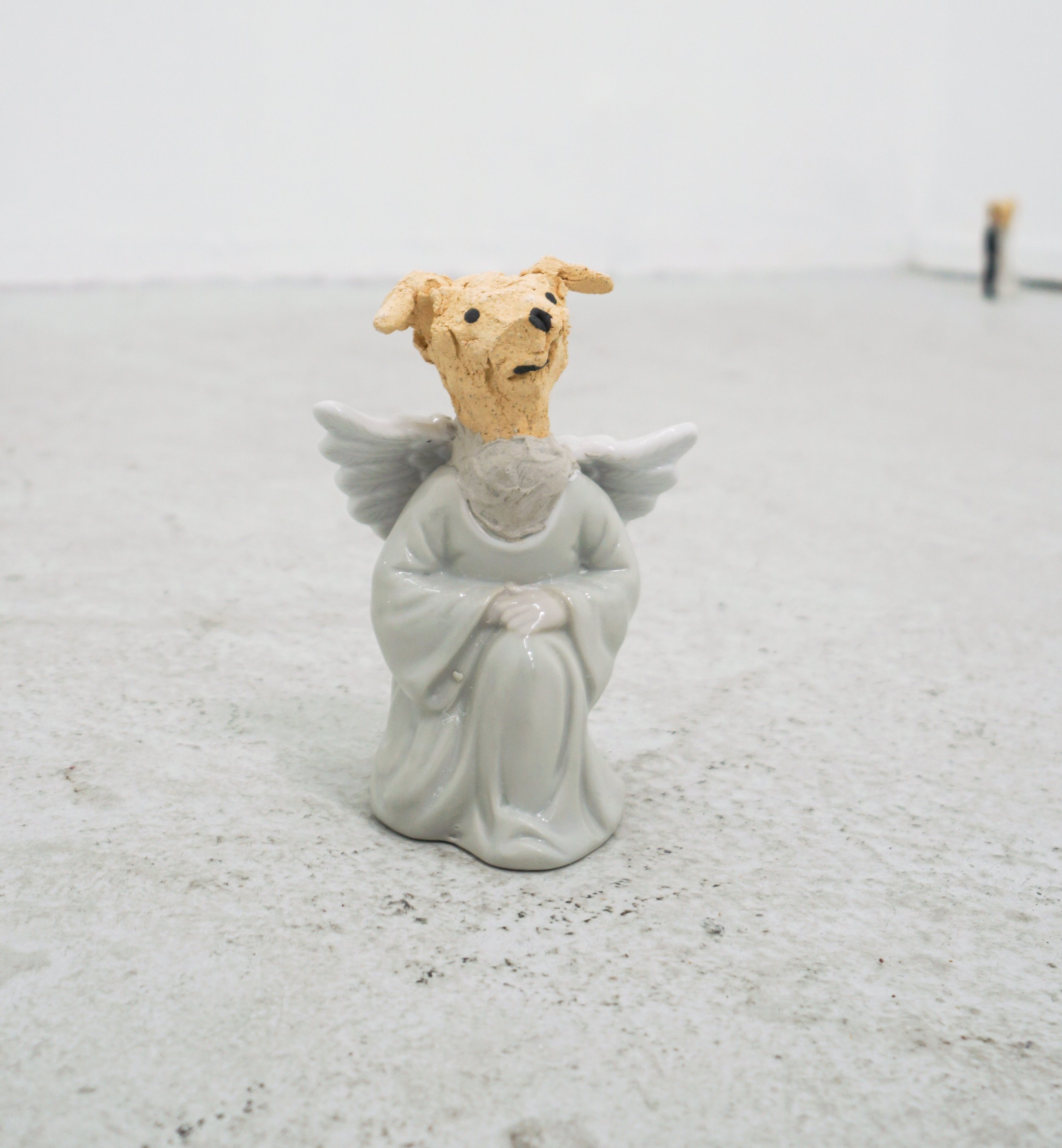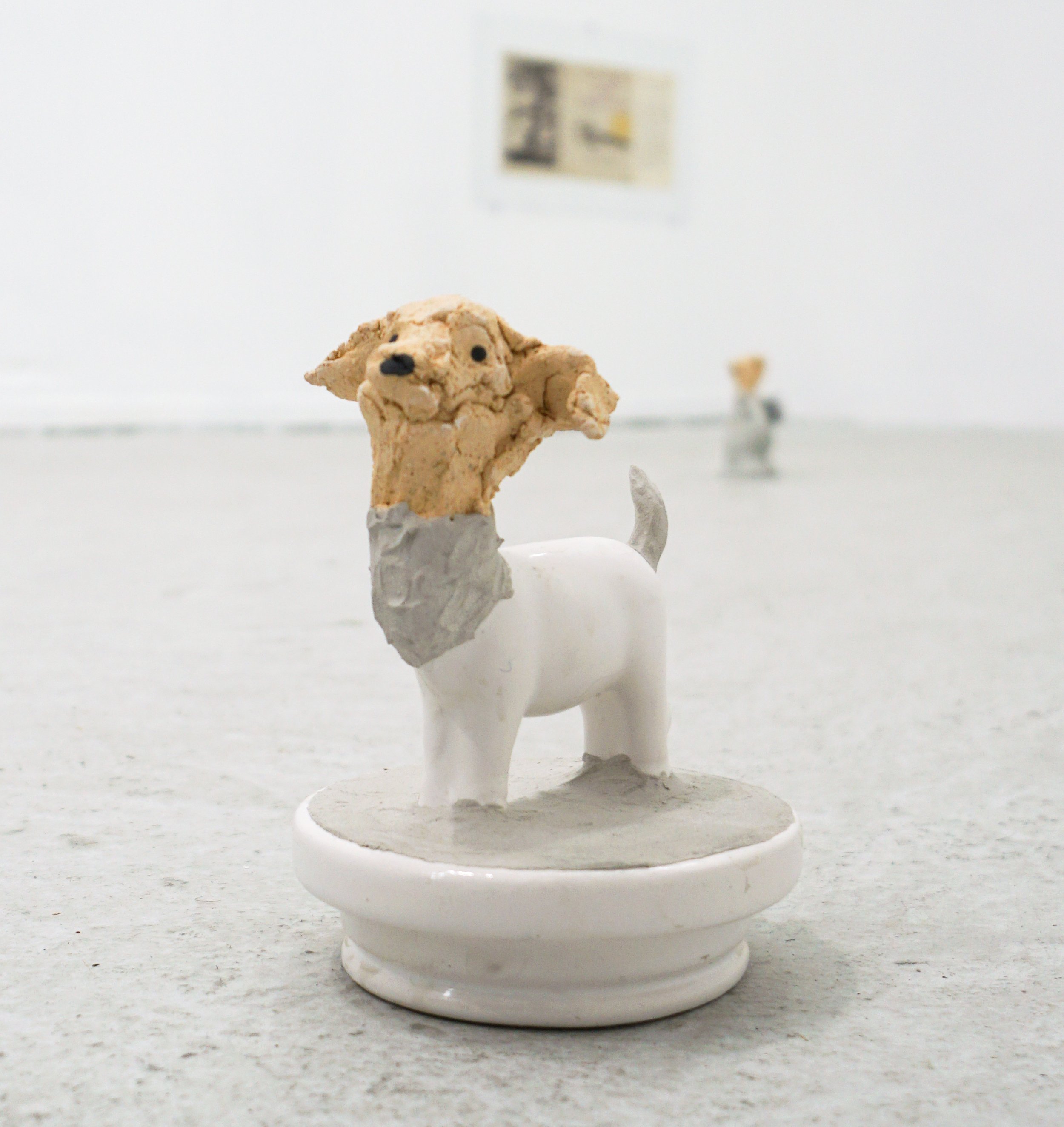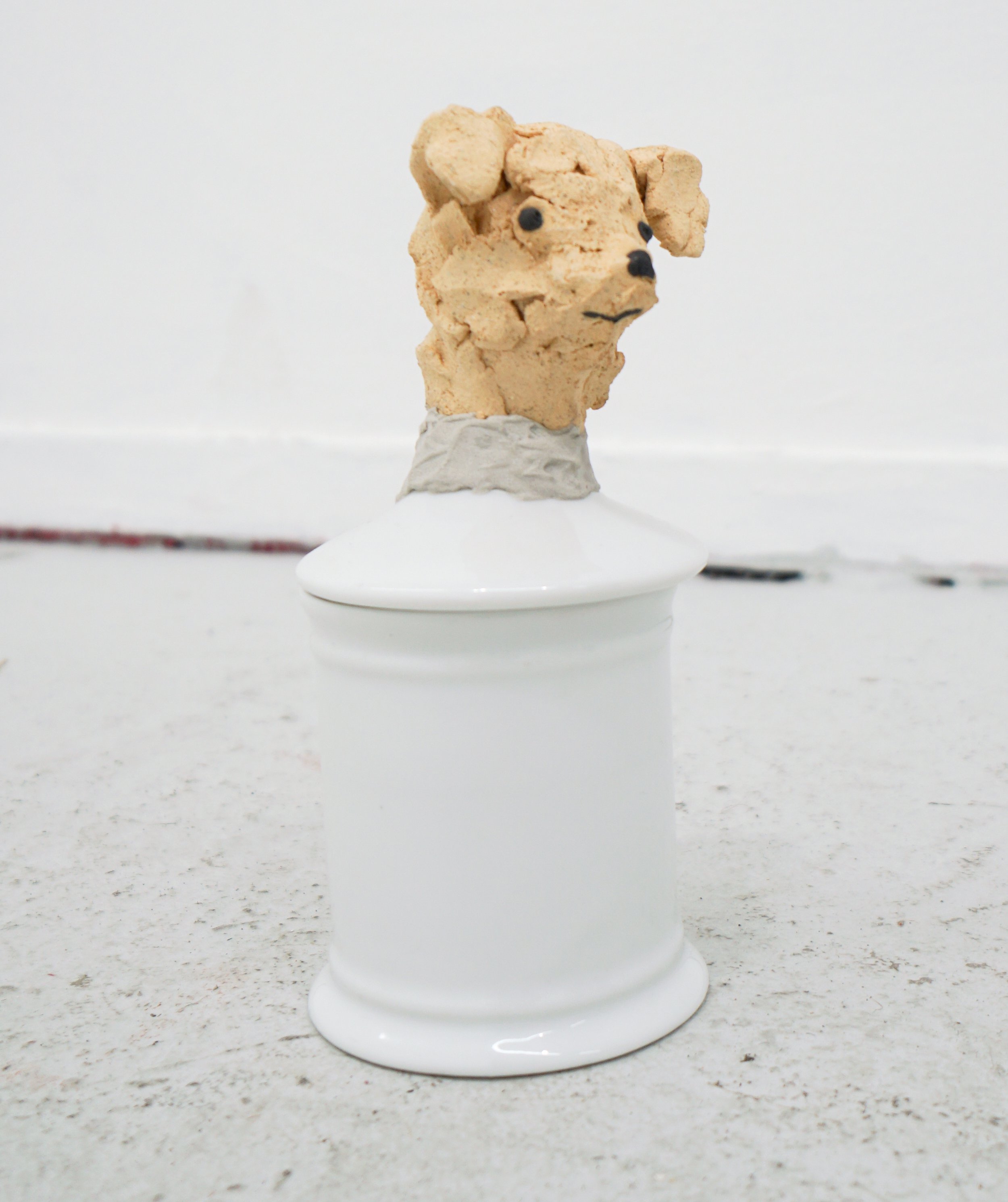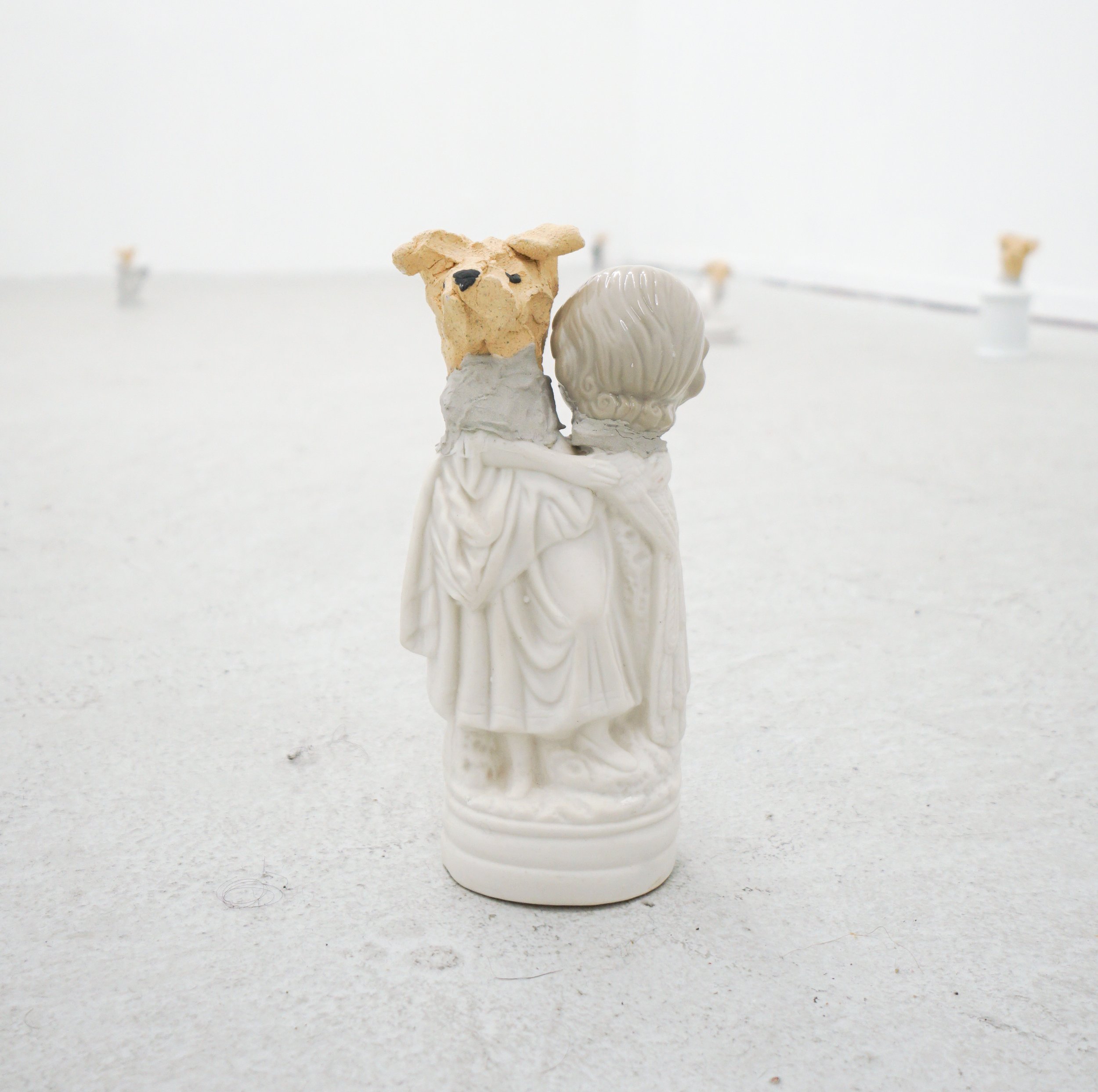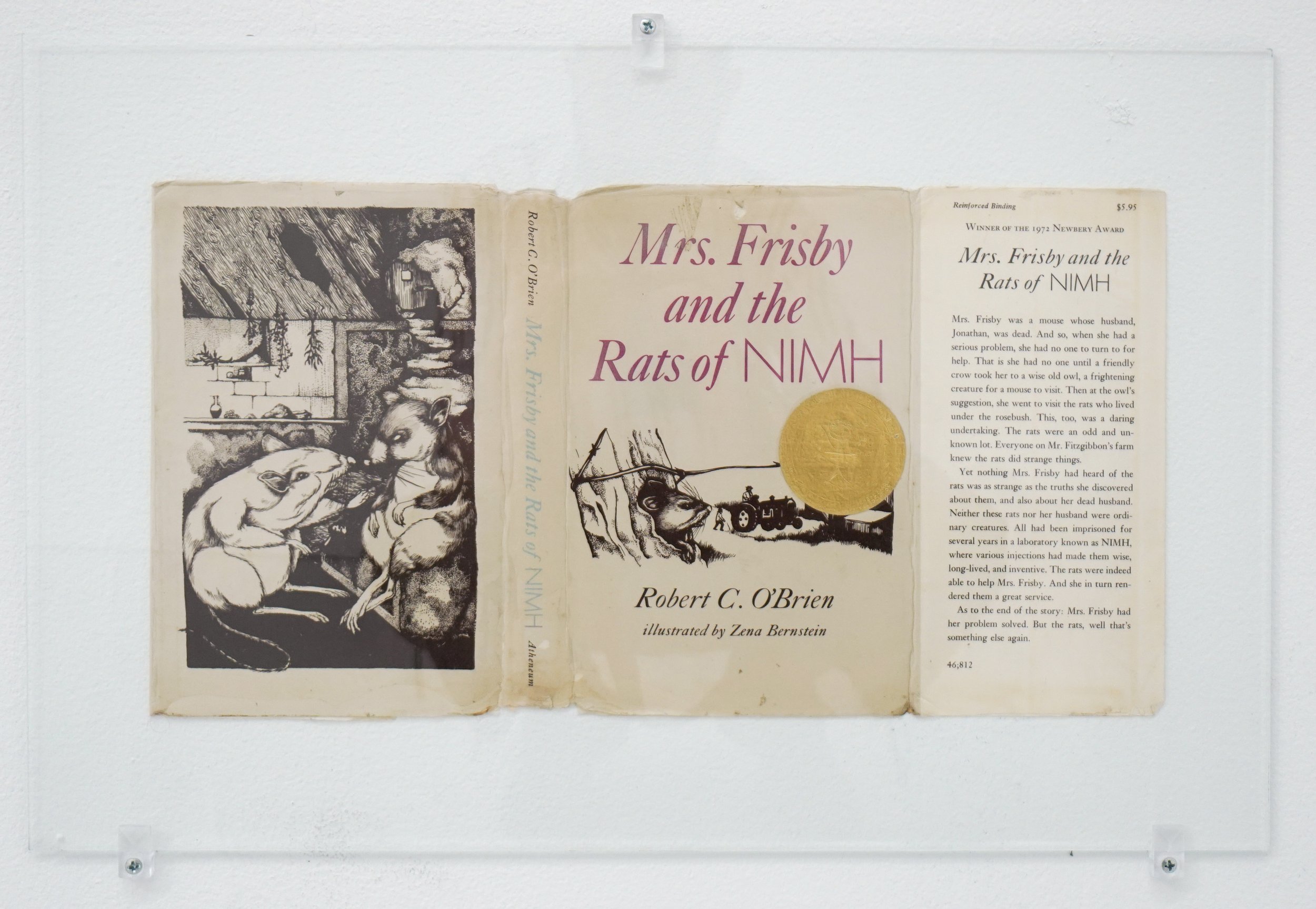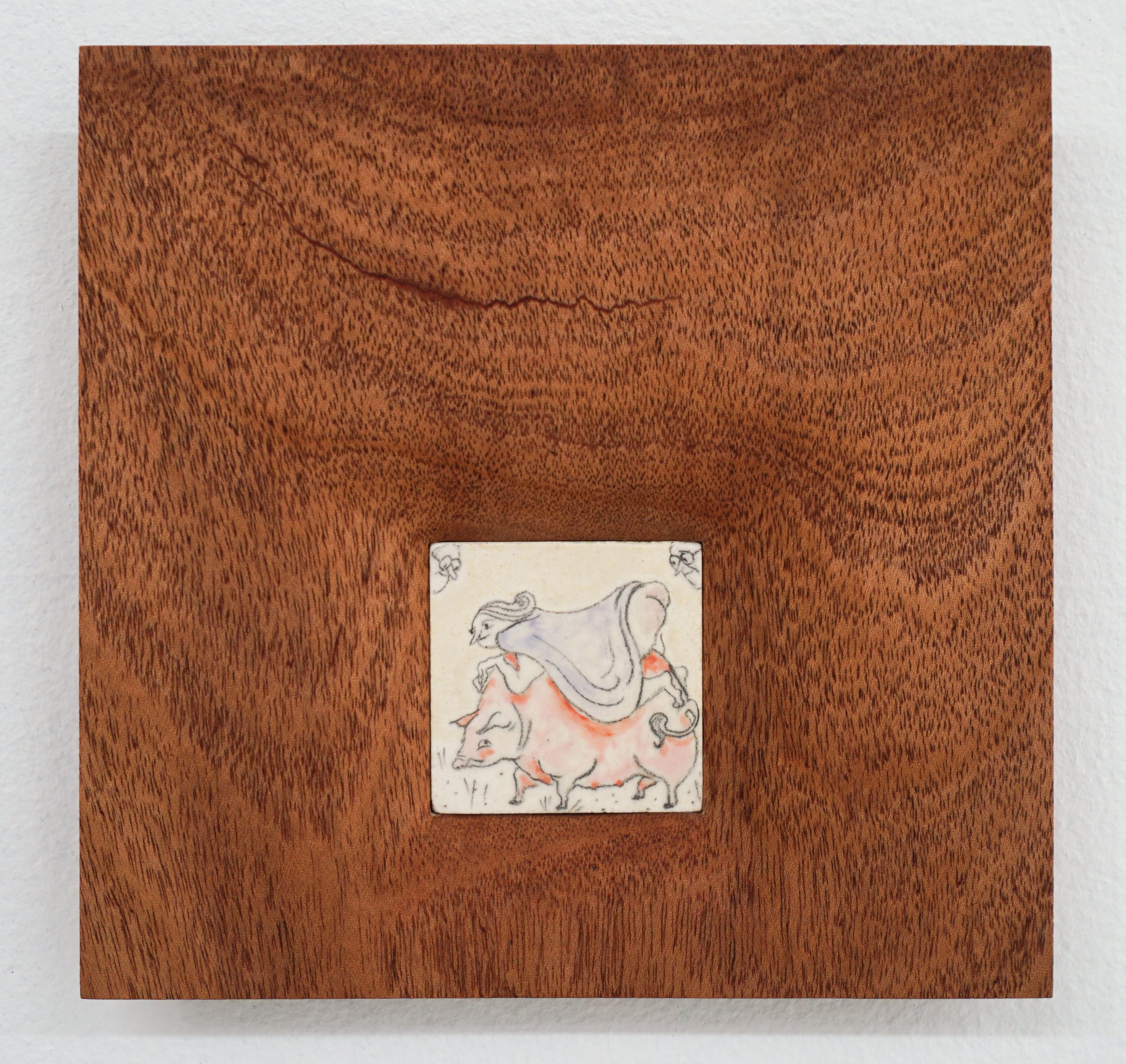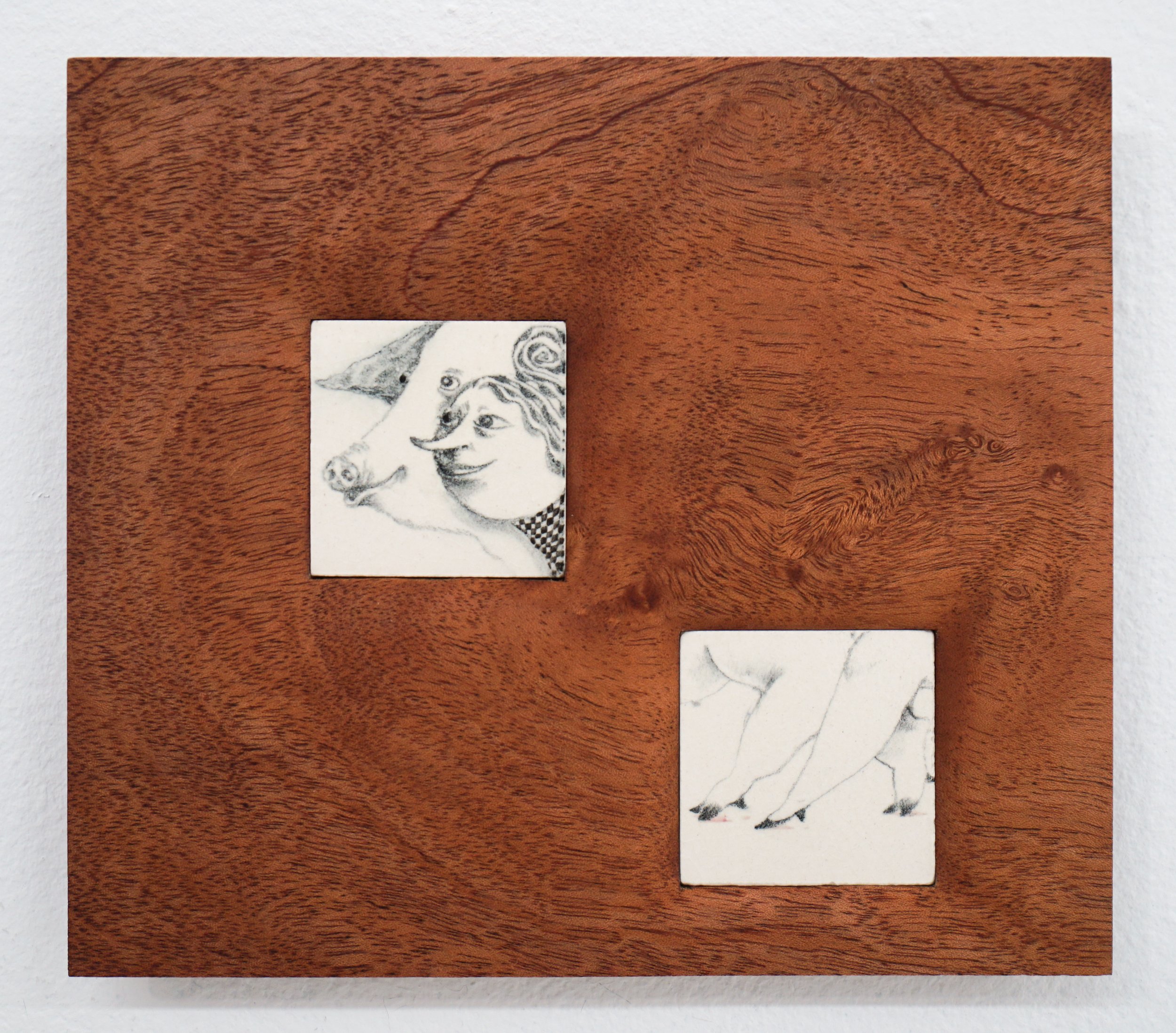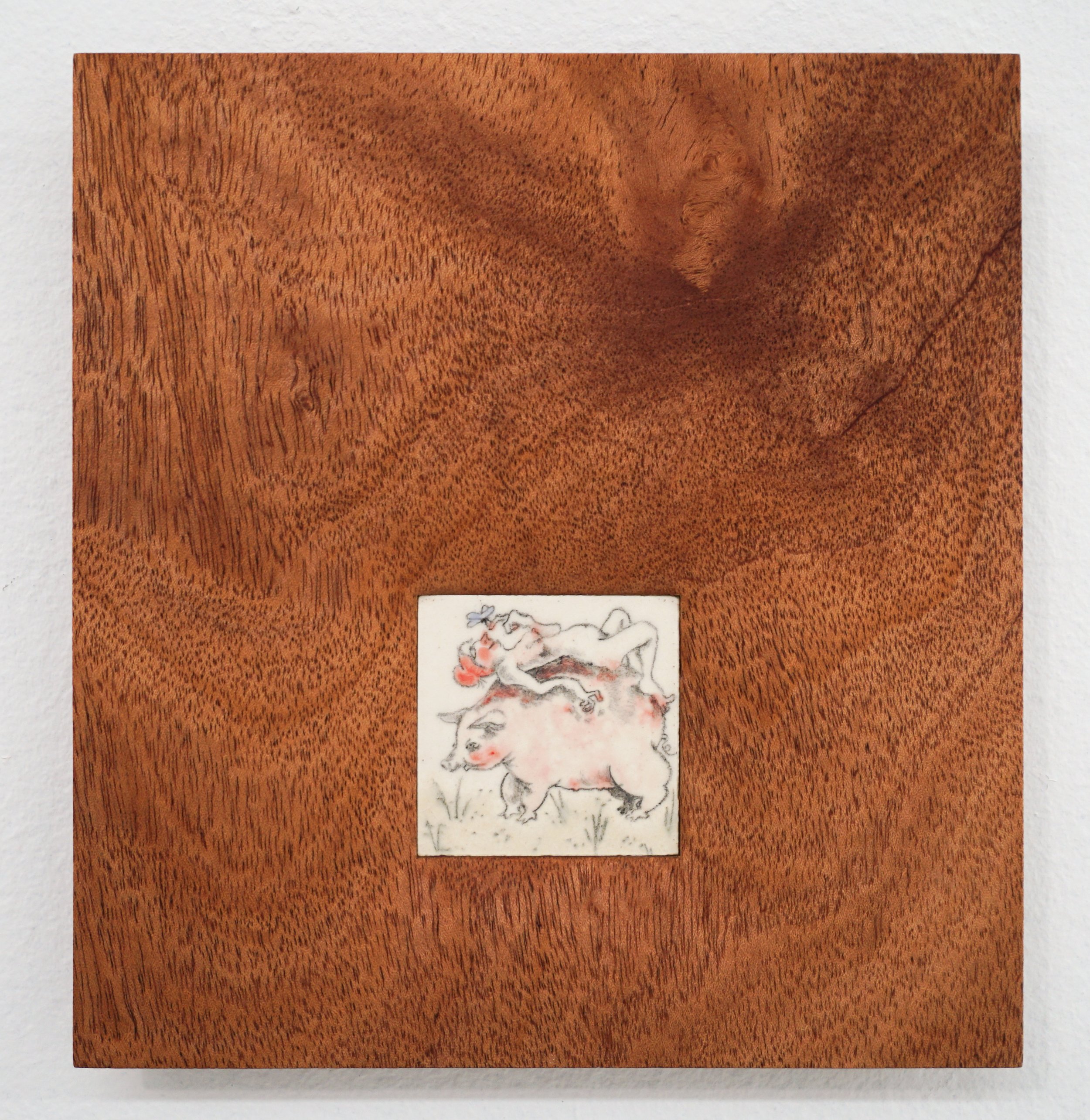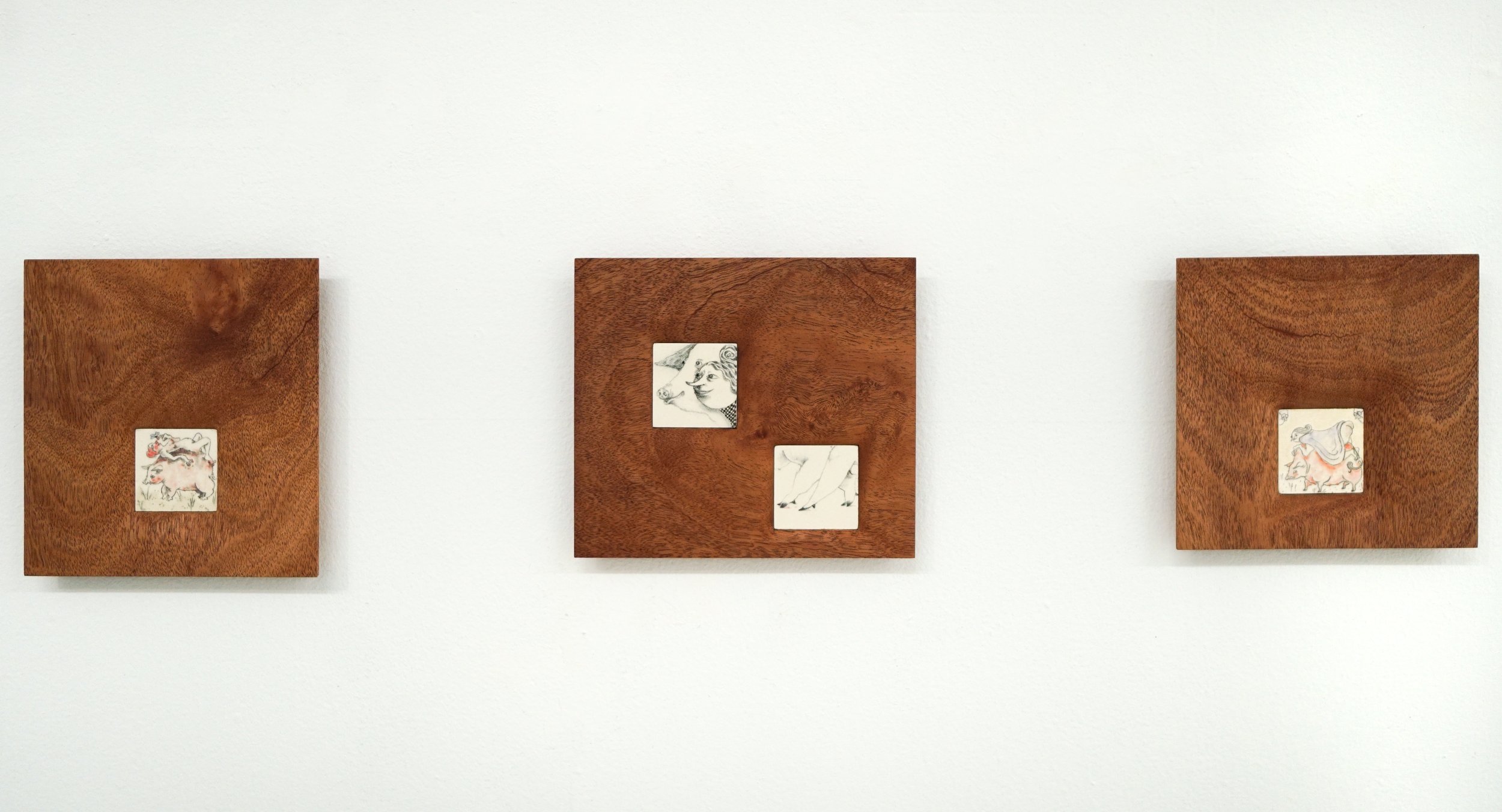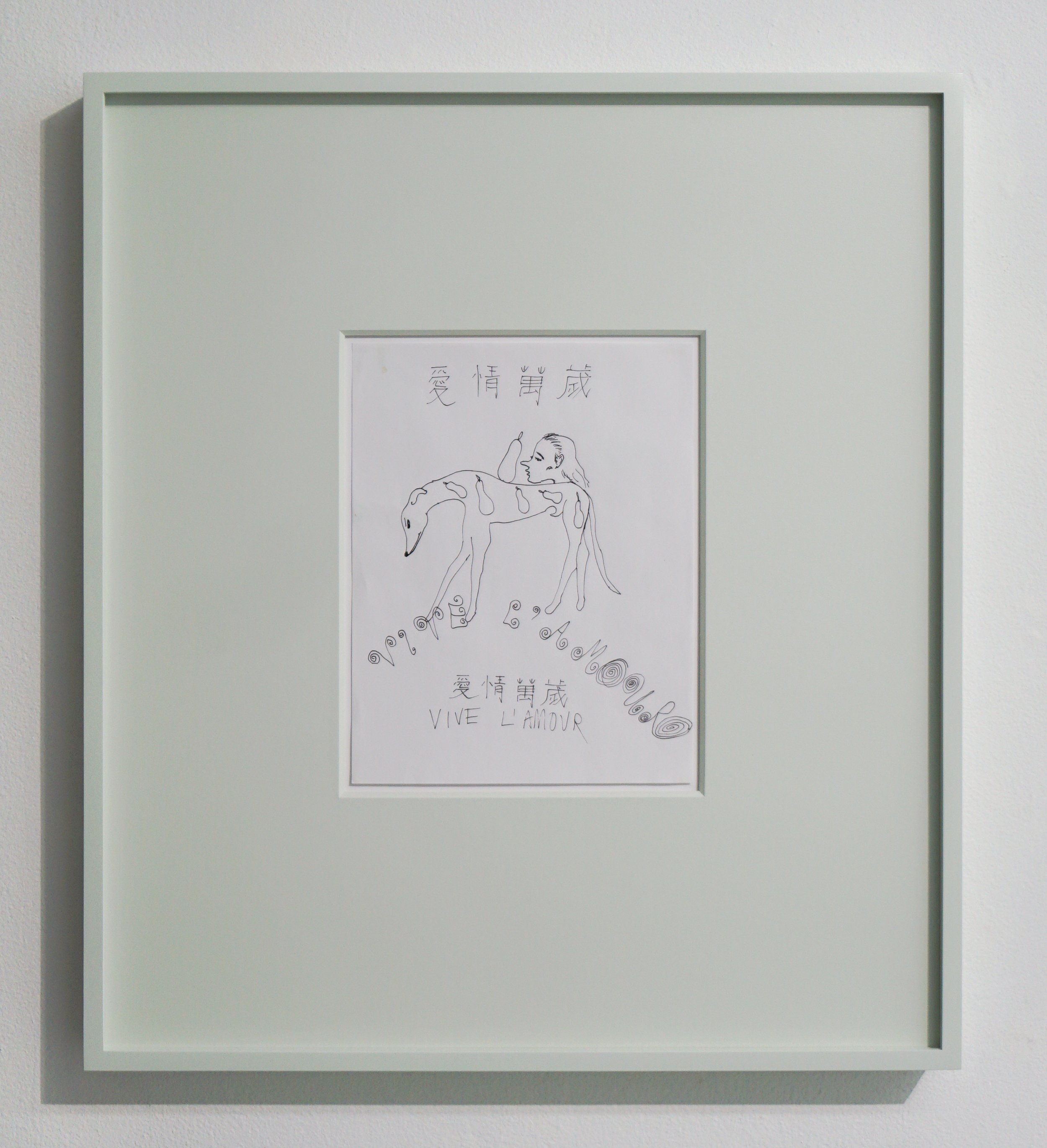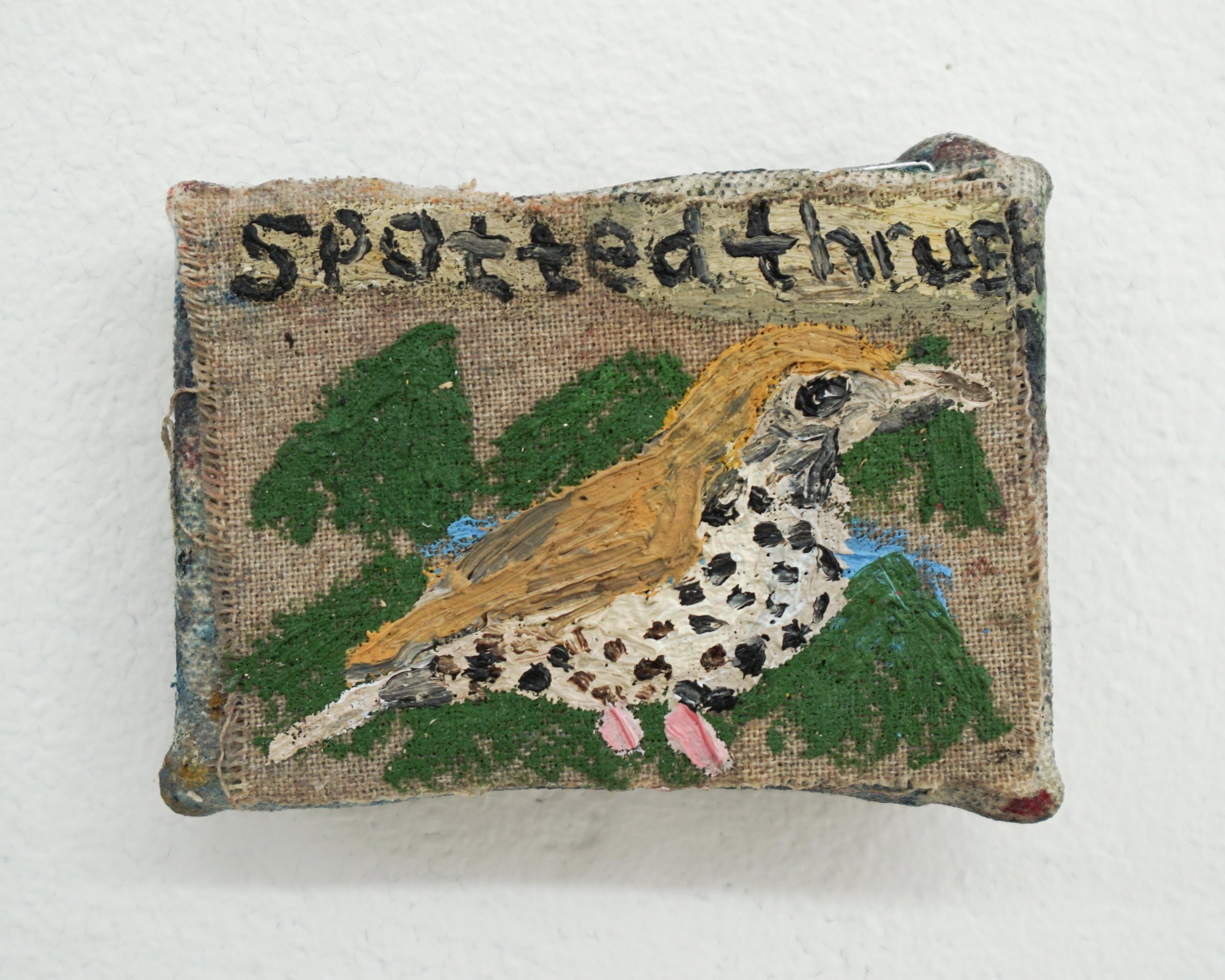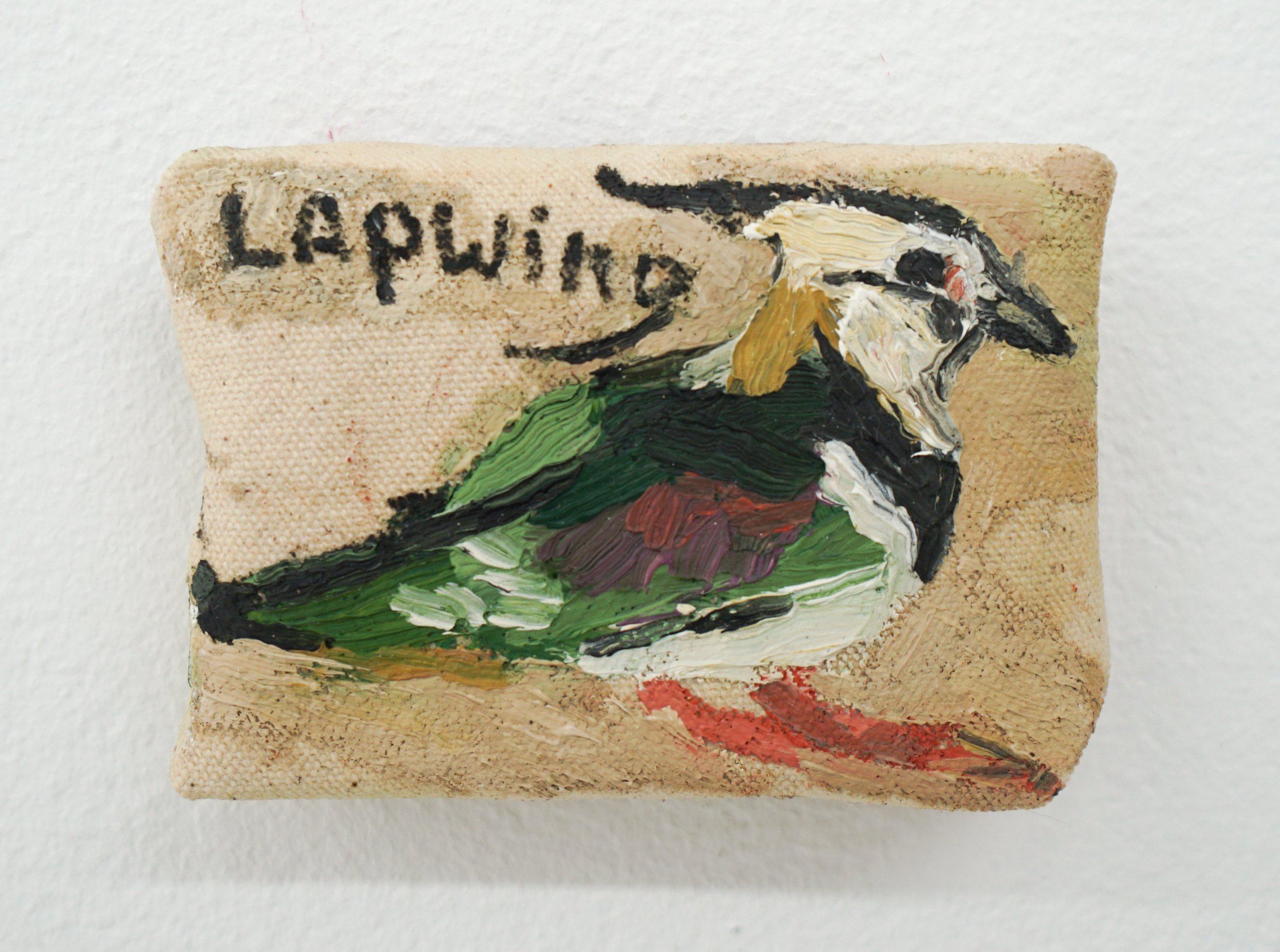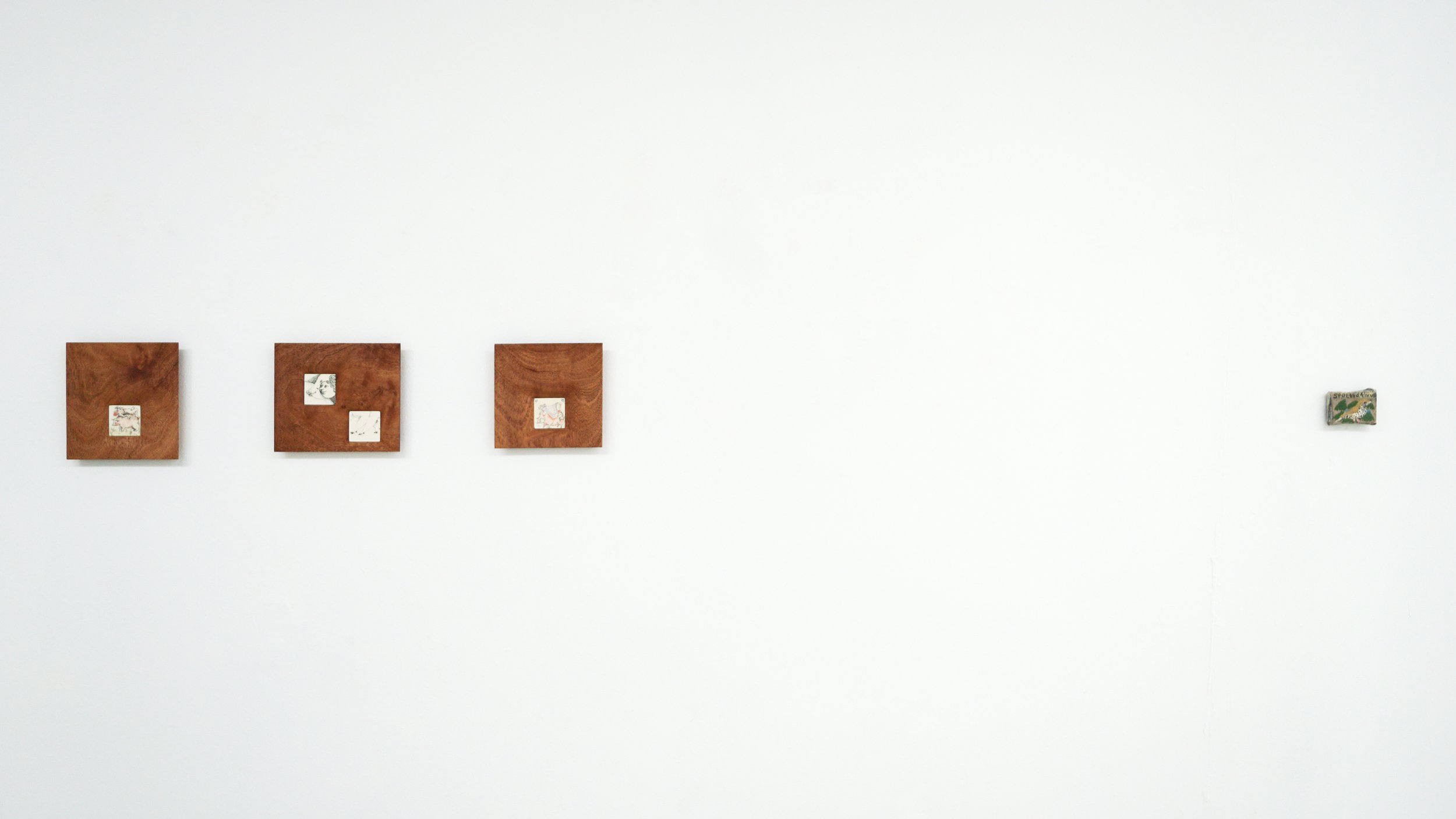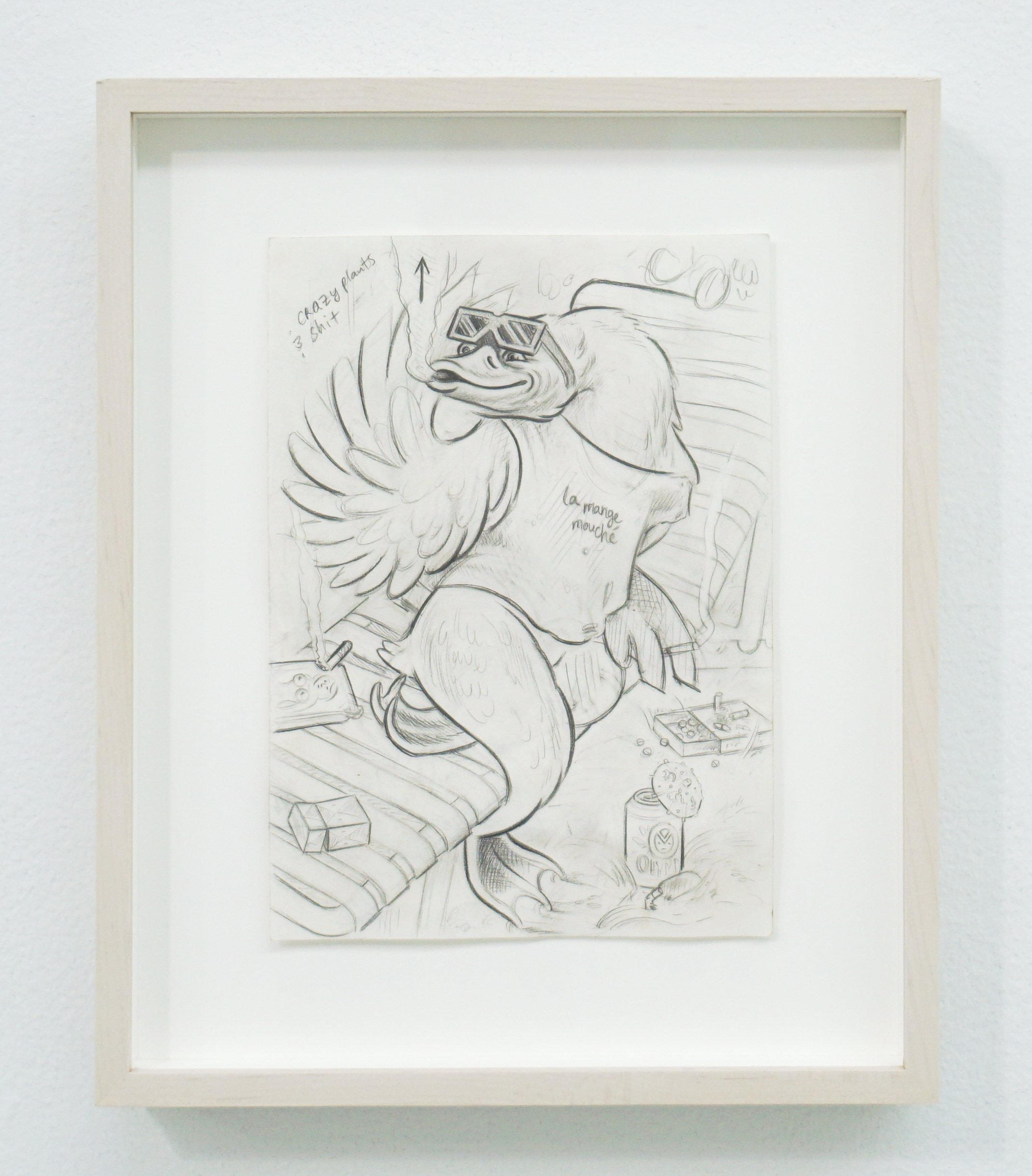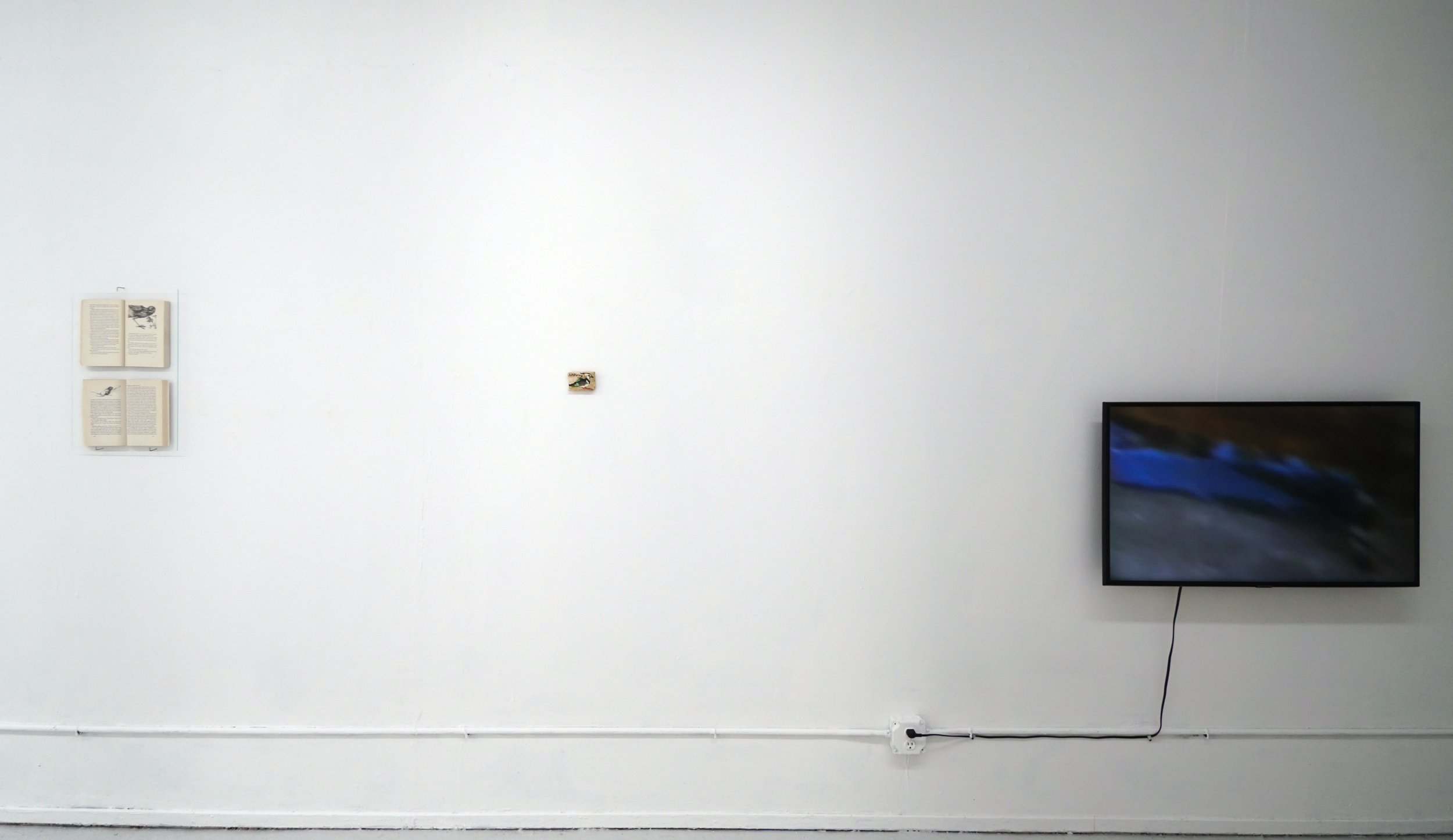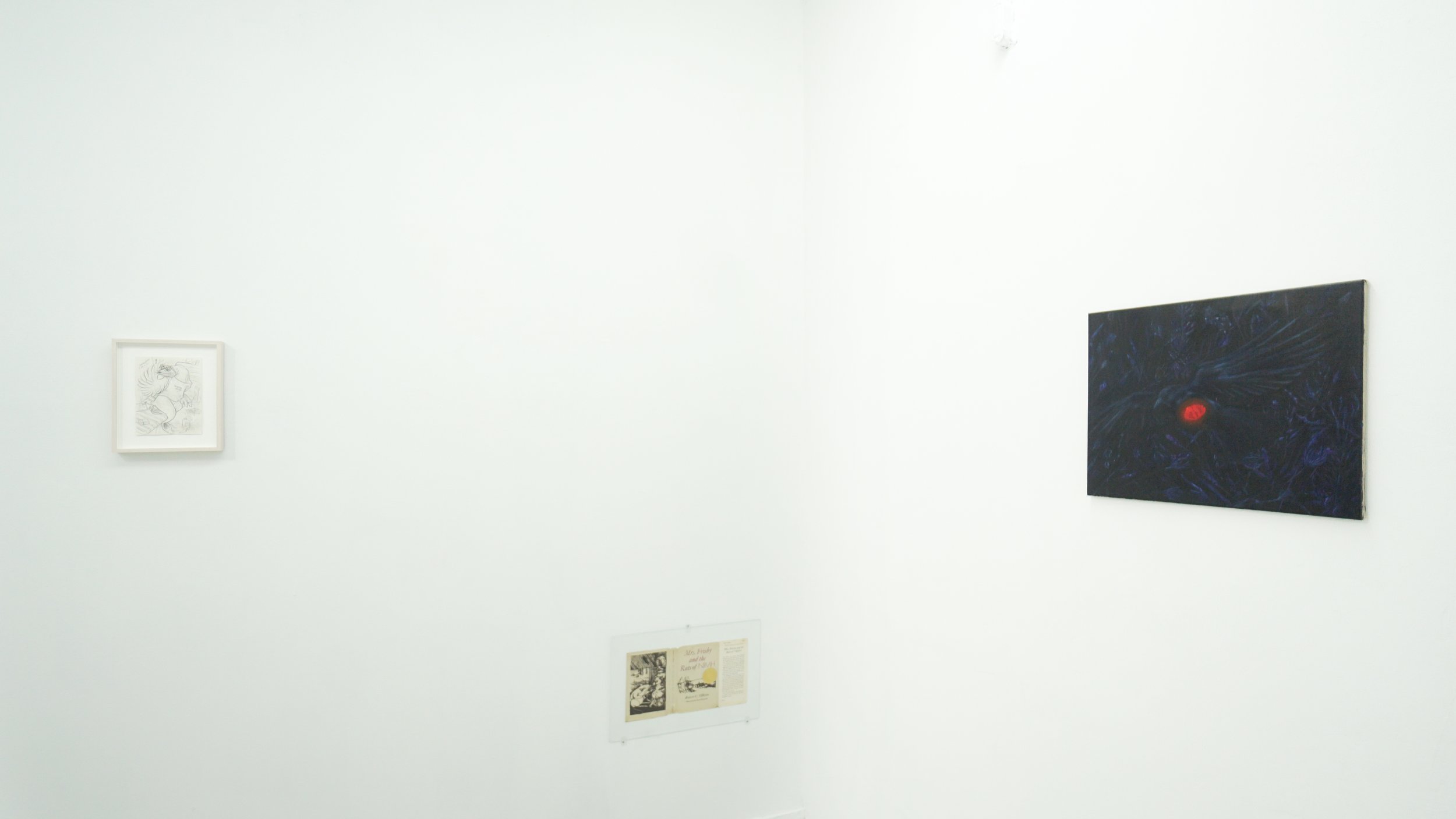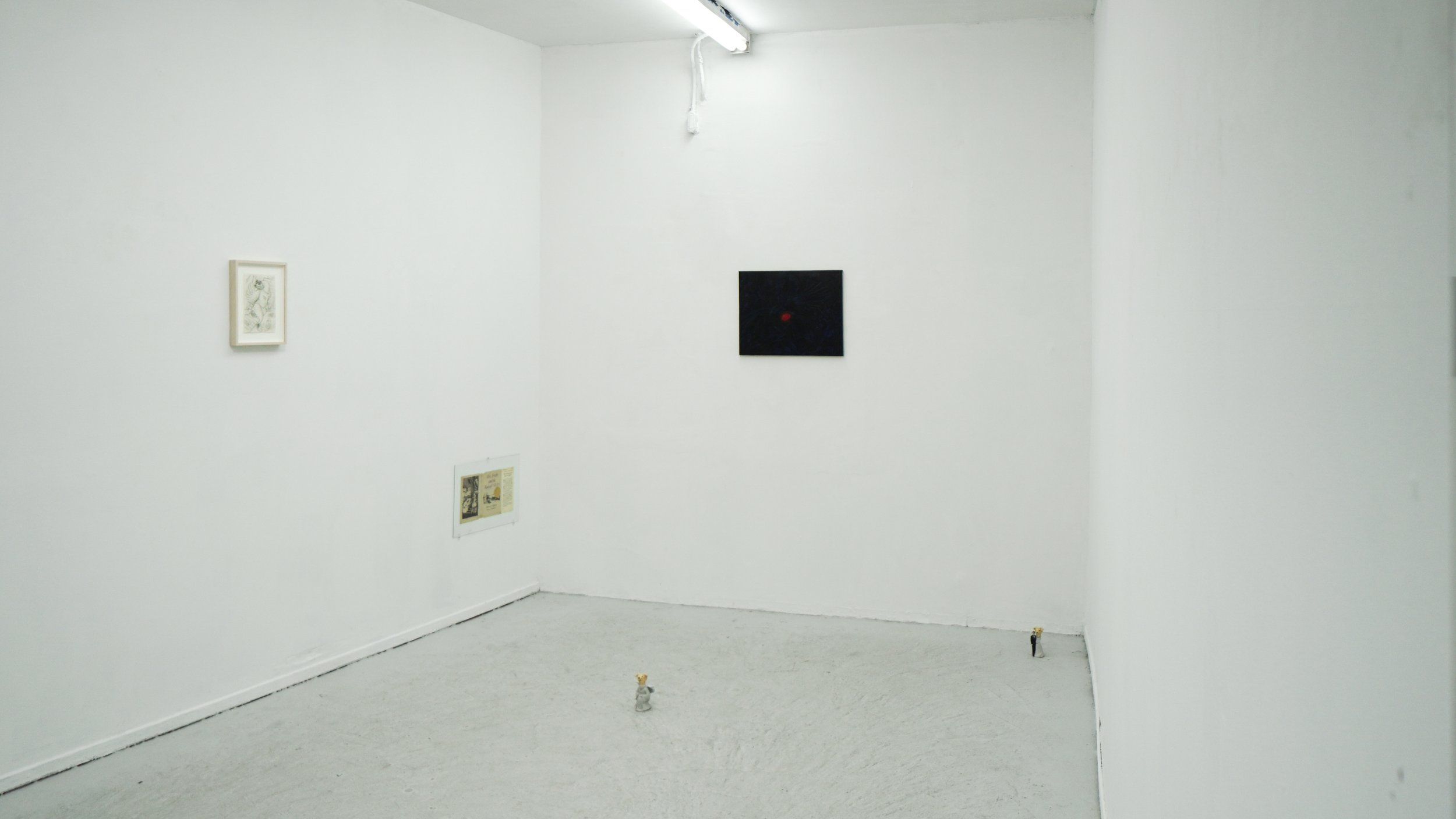Familiars
Sophie Barber
Zena Bernstein
Srijon Chowdhury
Brook Hsu
Em Kettner
Sahar Khoury
Koak
William Wegman
May 28 – July 2, 2022
620 Kearny Street
Reception: Saturday, May 28, 5:00 - 8:00 p.m.
Masks recommended
Em Kettner, Baubo, under study, 2022 (detail). Glazed porcelain tiles embedded in oil-sealed mahogany, 7 x 7 x .5 (tiles 2 x 2) inches. Courtesy of the Artist and François Ghebaly Gallery.
1.
There are amongst us a bevy of non-humans: domesticated pets, plants, birds that seasonally appear or those frequenting a bird feeder, certain inanimate charms. We pile sundry conveniences, transform the world to suit our unreasonable demands, view the world in terms of us humans and rarely a more widely constituted us – life writ-large.
A negotiation between what gives us comfort and security and what comforts and securities we can provide underlie our relationships with each other and with the non-humans. We are our best selves when we recognize our joys as not sprouting entirely from within (ourselves, our families, our communities, our nations, our species) but connected with the joys and struggles of the non-humans. Best when we consider ourselves, if not totally undeserving, then at the very least responsible to reciprocate the love and joy shared with us. To recognize empathy as something beyond (shared)language or anatomy.
2.
In the novel Mrs Frisby and the Rats of NIMH by Robert O’Brien, illustrated by Zena Bernstein, animals speak to each other, though maybe they rarely do. There is a distrust which goes with the territory of being predator or prey, of being in competition for a limited resource pool. The story centers on one family: a widow and her three
children who live in a cinderblock mostly buried during the fallow season of a small farm plot, and the mother, Mrs. Frisby, struggles to keep them all fed through the alternating easy and hard times. When one of her children grows too ill to survive a very necessary move, Mrs. Frisby is faced with a problem too big for even her determination. In an act of interspecies kindness, she rescues a crow who, hearing her plight, suggests she visit the owl for advice (a frightening proposition for a mouse); he directs her to reach out to the rats – a reclusive clan keeping to themselves and as of late participating in all manner of strange, shadowy undertakings. Rats, and a few mice, were the subject of an experiment which dramatically increased their intellect: they’ve built an underground city complete with electric lighting, a library, and machines and it is through their ingenuity that the Frisby family home can be moved with the youngest still inside. The story is about interspecies collaboration across valleys of distrust and difficult communication, about the responsibility that necessarily accompanies ability; maybe it’s living up to this responsibility which transmutes knowledge into wisdom.
3.
If there is good in this world, it emerges in the space between living beings. It bridges perceived distance, makes kin despite risk, despite difficulties of understanding.


